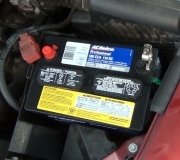Ugh! I hear that WAY too often from mechanics who know what to suggest but haven't actually looked at the vehicle. Sometimes I think they just want you to create more problems so you will "need" them later.
Engine Computers rarely cause a battery drain. In the '80s and '90s GM had a lot of trouble with computers causing all kinds of running problems. 98 out of 100 computers that were replaced were on GM vehicles, and many mechanics have that experience tainting their judgement. Forget about that possibility unless testing takes us there.
"Replacing an entire wire harness" is only done by mechanics who don't understand how to diagnose electrical problems. The only legitimate time to do that is when one gets melted or severely damaged. On my "bugged cars", my students eventually identify a broken wire as the cause of a problem but the proper fix is never to run a new wire as many suggest at first. They don't know why that wire broke, therefore, they don't know if the same thing will happen to other wires next to it in the future. They could be rubbing on a sharp metal bracket, for example, or be drooping onto the hot exhaust manifold. The proper repair is to find exactly where that wire is broken, (or grounded), fix it, determine why that happened, then take steps to prevent it from happening again.
Okay, enough of picking on that mechanic. I don't know which relay is clicking but that is a common symptom of low battery voltage, but it's not the cause. To go too dead to crank the engine in only 12 hours, that is either a pretty good drain or the battery isn't getting fully charged. It can also just be due to a shorted cell in the battery. Since you replaced it already, lets start with a charging system test. With the engine running, the voltage must be between 13.75 and 14.75 volts. If you don't already have an inexpensive digital voltmeter, you can find them at any auto parts store, hardware store, home improvement store, Sears, Radio Shack, and Walmart. If you have a Harbor Freight Tools store nearby, they have a perfectly fine meter for less than ten bucks, often on sale for $2.99.
If the voltage is less than 13.75 volts, the battery will not become fully charged. The memory circuits for the numerous computers will kill a good battery in as little as three weeks, but with a less than fully charged battery, that can happen in a few days.
If the charging voltage is okay, we'll have to move on to the drain test. If it is low, start by charging the battery with a battery charger on the lowest setting for two hours, then turn on the head lights for half a minute, turn them off, then remeasure the battery voltage. It should be 12.6 volts.
Starting with that battery at 12.6 volts, measure it again after 12 hours. If it's still near that voltage, it should crank the engine and start it. If it is down to around 12.0 volts, the drain is running the battery down. My guess is that's what you're going to find since installing a cutoff switch sidestepped the problem.
Starting with mid '90s vehicles, testing for a current drain has become more complicated by having some computes that will draw real high current for up to 20 minutes after stopping the engine. I have an entire web page devoted to the procedure. It's not complicated but it takes a lot of typing to describe it. Before I send you there, see what the charging voltage is to be sure it's between 13.75 and 14.75 volts.
Thursday, April 26th, 2012 AT 9:13 PM

